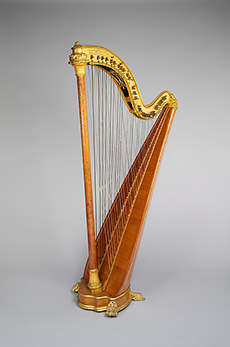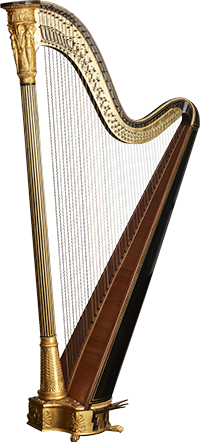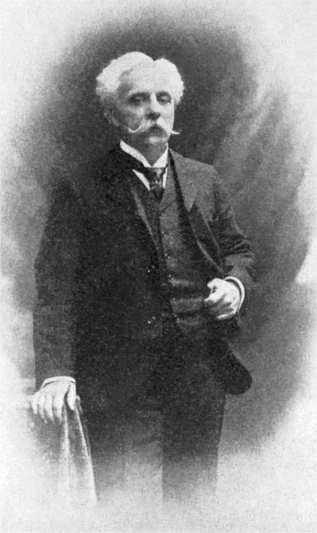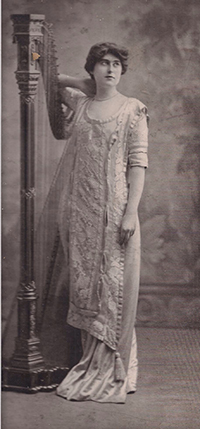
Chromatic harp
The harp as an instrument came to its greatest development in Paris in the 20th century with the development of the chromatic harp by Pleyel. The chromatic harp (also known as cross-strung harp) was the first to have all 12 tones of the chromatic scale each on its own string. It has two rows of strings that cross but do not touch. This harp was developed to deal with the growing chromaticism of modern music.

The Pedal Harp
After the chromatic harp came what we now use as the modern concert harp, the pedal harp, which requires the use of pedals to create accidentals (sharps and flats).
The chromatic harp inspired French composers to write for it, and particularly for the Premier Prix competition at the Paris Conservatoire. In 1904, Gabriel Fauré (1845-1924), director of the Conservatoire, wrote his Impromptu, Op. 86, for the competition, which was won by 14-year-old Micheline Kahn (1889-1987). The audience’s disbelief at the first appearance of the teenager was dispelled by her outstanding performance and she was recognized as a true artist.

Eugène Pirou: Gabriel Fauré
Fourteen years later, Fauré wrote another work, a miniature for harp, Une châtelaine en sa tour, Op. 110 and dedicated it to Kahn. The title comes from Verlaine’s poem ‘Une sainte en son auréole’ and describes a ‘noble lady’ like those of long ago who personifies ‘grace and love.’

Micheline Kahn
It’s a melancholic piece, slightly plaintive. Harpists view it as an elegy, although there is nothing in Verlaine’s poetry to convey that. The minor key of the opening changes in the middle to a bright F major, before fading away to nothingness. Writers, looking at the time it was written, wonder if it’s Fauré’s reflection on WWI, or perhaps a nod to a young harpist from a 73-year old composer.
Fauré: Une châtelaine en sa tour, Op. 110 (Kazuko Shinozaki, harp)



